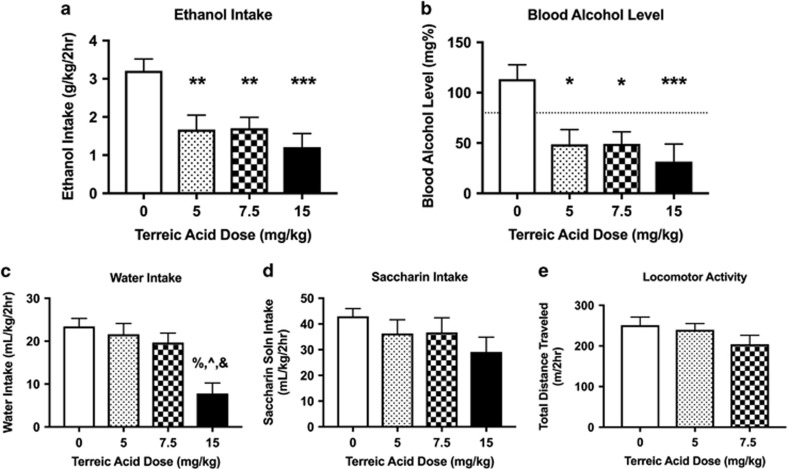Figure 2.
Effects of the candidate drug, terreic acid, on binge drinking in High Drinking in the Dark (HDID-1) mice. Terreic acid significantly reduced binge-like ethanol (20%) intake (a) and blood alcohol levels (BALs) (b). NIAAA defines binge drinking as a pattern of drinking that produces BALs of 80 mg%, designated in b by a dashed line (at y=80). Although the highest dose of terreic acid tested reduced water intake (c), none of the doses tested significantly reduced intake of saccharin (8.5 mM) (d). Furthermore, doses of terreic acid that reduced ethanol intake and BAL did not alter locomotor activity (e). Results of Tukey’s post-hoc analysis are indicated above the SEM bars. In a and b, *P<0.05, **P<0.01, and ***P<0.001 vs the 0-dose groups and in c %=P<0.0001 for 15 vs 0 mg/kg, ^P<0.001 for 15 vs 5 mg/kg, and &P<0.01 for 15 vs 7.5 mg/kg terreic acid. Values represent mean±SEM (Drinking assays: n=12-24/sex/dose; data shown are collapsed on sex, thus each bar represents 24–47 mice; Activity assay: n=7–8/sex/dose).

